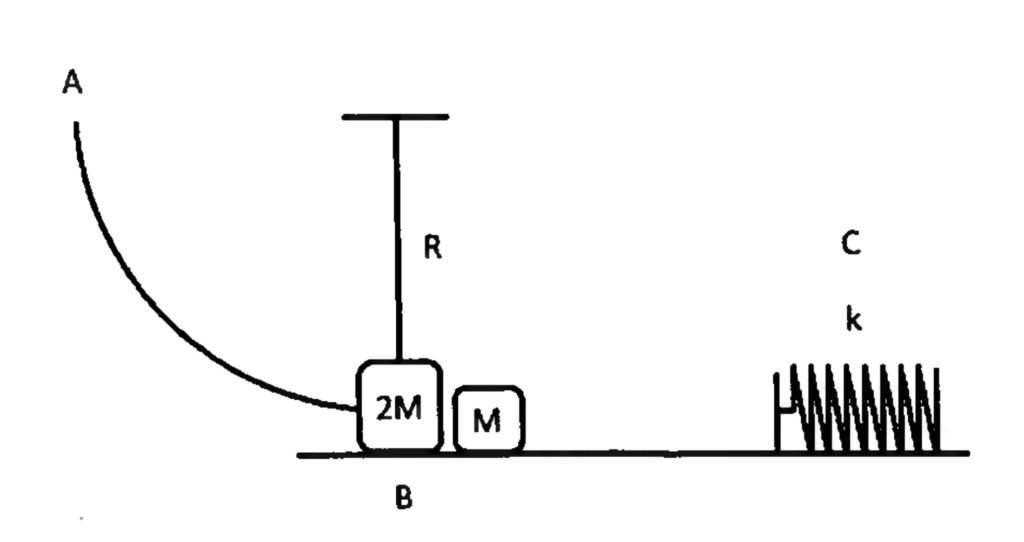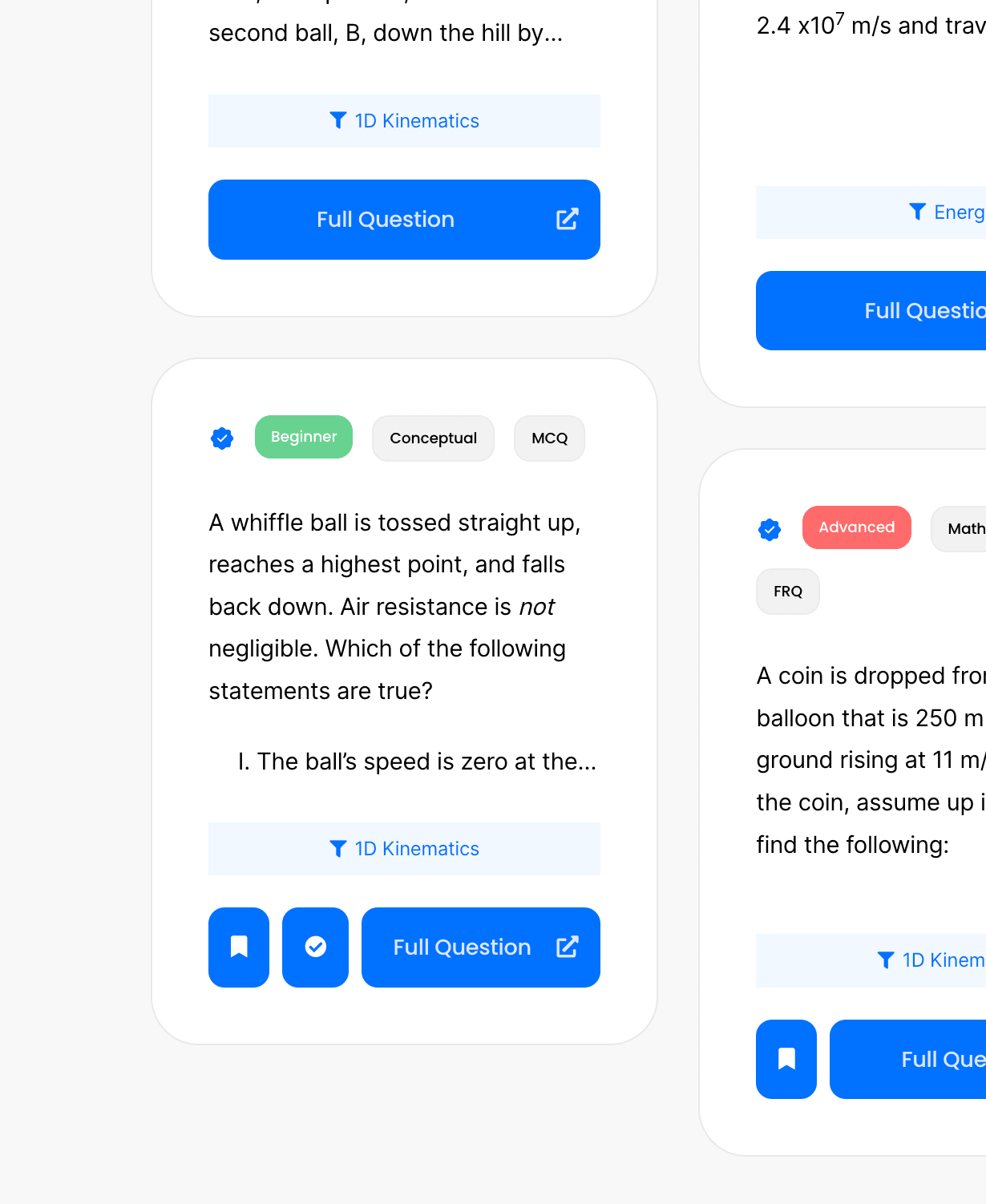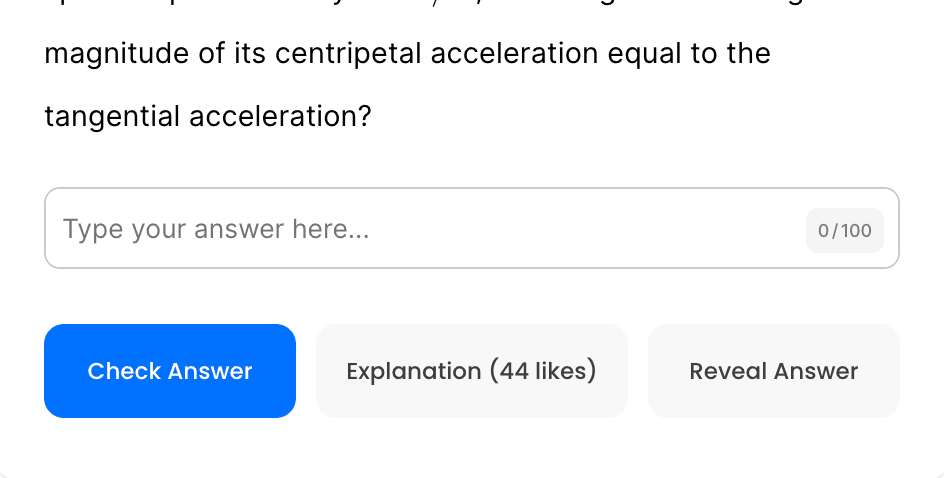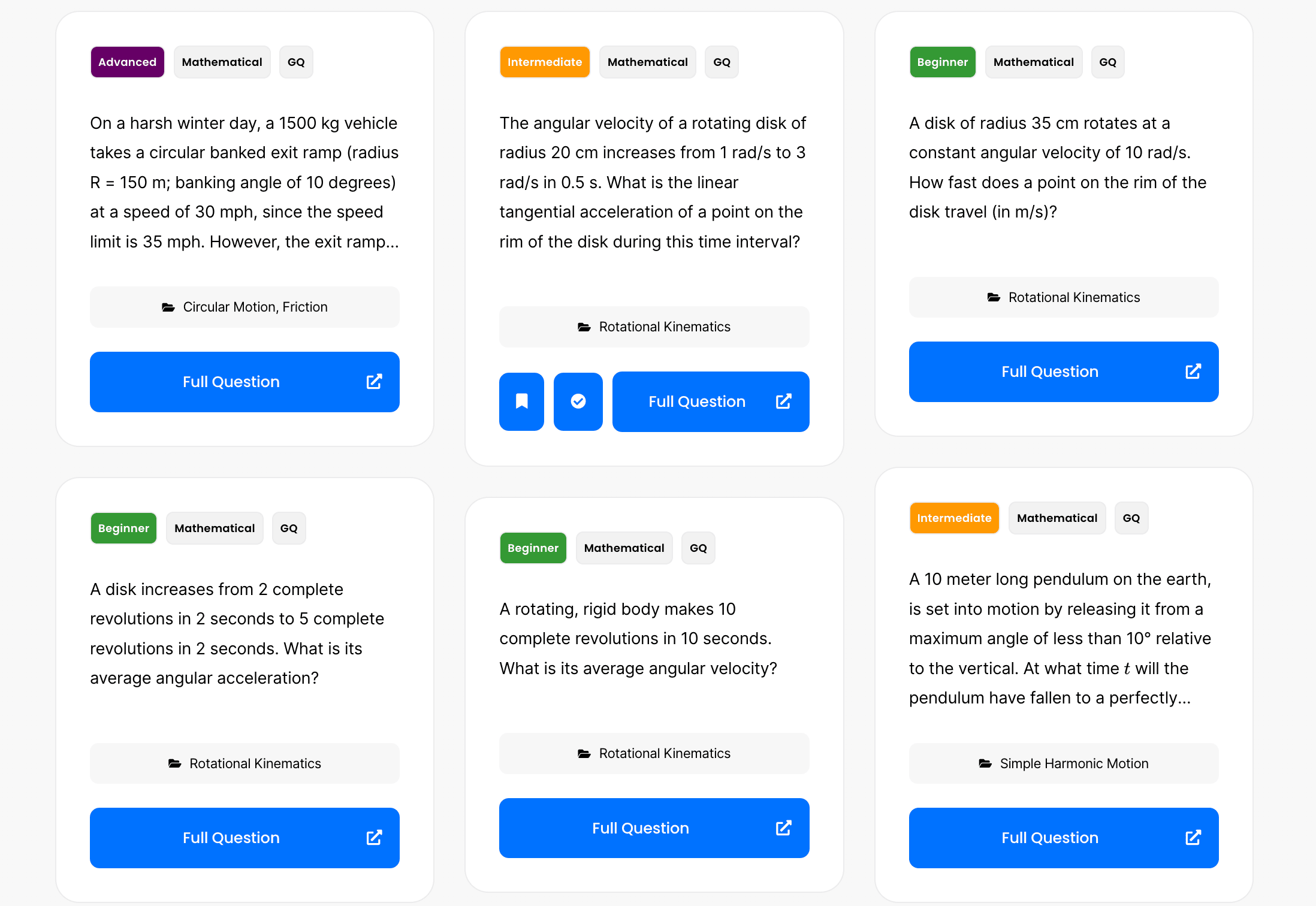A baseball is thrown at an angle of 25° relative to the ground at a speed of 23.0 m/s. The ball is caught 42.0 m from the thrower.
Balsa wood with an average density of \( 130 \) \( \text{kg/m}^3 \), is floating in pure water. What percentage of the wood is submerged?

Three identical reservoirs, \(A\), \(B\), and \(C\), are represented above, each with a small pipe where water exits horizontally. The pipes are set at the same height above a pool of water. The water in the reservoirs is kept at the levels shown. Which of the following correctly ranks the horizontal distances \( d \) that the streams of water travel before hitting the surface of the pool?
Jill does twice as much work as Jack does and in half the time. Jill’s power output is
A solid metal bar is at rest on a horizontal frictionless surface. It is free to rotate about a vertical axis at the left end. The figures below show forces of different magnitudes that are exerted on the bar at different locations. In which case does the bar’s angular speed about the axis increase at the fastest rate?
The maximum acceleration a pilot can withstand without blacking out is about \( 7.0 \) \( g \). In an endurance test for a jet plane’s pilot, what is the maximum speed he can tolerate if he is spun in a horizontal circle of diameter \( 85 \) \( \text{m} \)?
The Moon does not crash into the Earth because:

Refer to the diagram above and solve all equations in terms of \(R\), \(M\), \(k\), and constants.
A projectile is launched at an angle of \( 30^{\circ} \) and hits a vertical wall \( 40 \) \( \text{m} \) away. After bouncing back horizontally, it lands \( 15 \) \( \text{m} \) behind the launch point. How high up on the wall did the projectile strike?
A rocket, initially at rest, is fired vertically upward with an acceleration of \( 12.0 \, \text{m/s}^2 \). At an altitude of \( 1.00 \, \text{km} \), the rocket engine cuts off. Drag is negligible.
An eagle is flying horizontally at \(6 \, \text{m/s}\) with a fish in its claws. It accidentally drops the fish.
An elevator of height \(h\) ascends with constant acceleration \(a\). When it crosses a platform, it has acquired a velocity \(u\). At this instant a bolt drops from the top of the elevator. Find the time for the bolt to hit the floor of the elevator. Give your answer in terms of \(h\), \(a\), and any constant.
By continuing you (1) agree to our Terms of Use and Terms of Sale and (2) consent to sharing your IP and browser information used by this site’s security protocols as outlined in our Privacy Policy.
Quick Start Guide
AP physics 1, AP C, honors and advanced physics students.
Quickly filter questions by units and more.


Here’s guide to using 5 UBQ filters.
GQ = general question, MCQ = multiple choice, FRQ = free response.


Click the check or bookmark button.
Now you’ll be able to see completed or bookmarked questions at a glance!
Answer keys, personalized for you.

Phy will be responsible for grading your FRQs and GQs.
No more copy and pasting. Just solve and snap.
Questions for Mastery

By continuing you agree to nerd-notes.com Terms of Service, Privacy Policy, and our usage of user data.